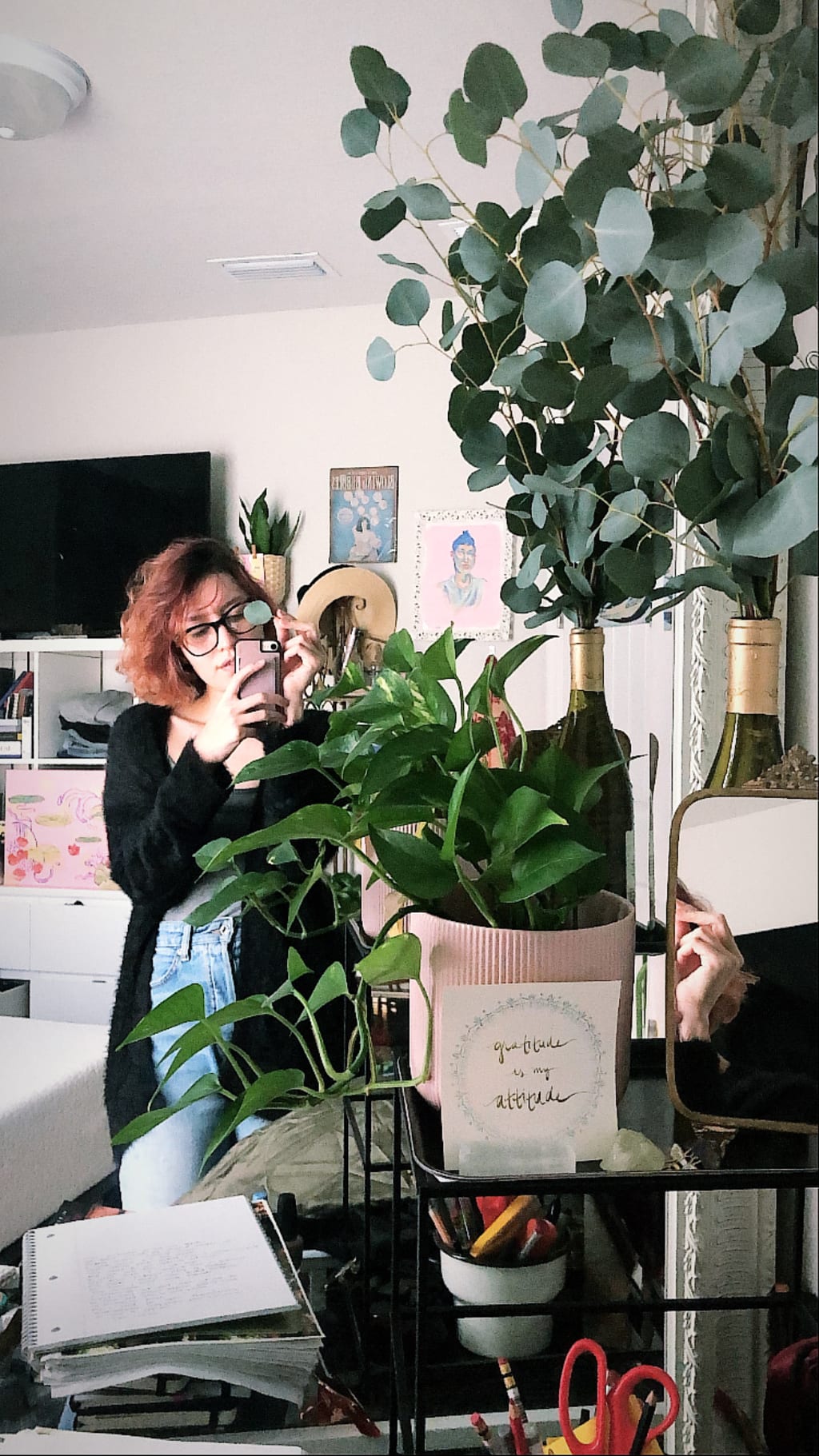Plants Are Good for You, Take Care of Them
Beginners Guide to Plant Care for the Black Thumb.

They can help to boost your mood and focus, they clean the air and they look good. All they ask for is a little light and some attention once in a while. Sounds like a pretty sweet trade to me.
Learning how to care for your plants grows, no pun intended, a relationship with them and a pride for their prosperity and your implied competence.
It was a real journey for me to finally get the hang of gardening and I’ve shamefully dumped a number of dead plants into the dumpster, myself. These days I have 11 thriving, happy, healthy plants. Here I’ll share some simple tips to help you finally become the abundant plant parent of your dreams.

1. Choosing Your Plant Baby
It can be tempting to grab the most beautiful and lushest plant you can find in the garden section of Home Depot but I’d advise doing just a little research before choosing your new plant. I heard a tip once that I have kept with me every time I go plant shopping: Find a plant for a spot, don’t find a spot for a plant. In other words, it helps a lot if already know where you want to put your new plant.
Asses the area for light. Is it a windowsil with a lot of direct sunlight? Is it a dim corner of an office? Is it a spot on the coffee table of your bright living room but a place that doesn’t get direct light?
Plants generally fall into two categories: low light and bright light. Be advised that low light doesn’t mean dark. Some hardier plants can live in pretty dim light but they do still need light, photosynthesis and all. Also, contrary to what you may think, bright light doesn’t always mean direct sunlight. Some make the mistake of placing a plant, which needs a lot of light but has delicate leaves, right in a sunny window. Then they’re surprised when the leaves start dying because they’re sunburning (not speaking from experience or anything, cough, cough).
So, READ THE TAGS. They’re your best friend in the store. Each plant in a shop should have either a sticker on the pot or a little paper tag in the soil with info like how much water and light it will need to be happy. Just make sure the special spot for your new plant matches the needs of the one you bring home.

2. Watering your plant baby
The whole watering schedule thing can be quite daunting to tackle when you start out. Didn’t I water that plant last week? Am I not watering it enough? Am I watering it too much? Trust me I’ve been there when the panic sets in from watching my poor little plant slowly die before my very eyes and feeling clueless as to what’s wrong.
To make things simple, I like to follow the finger rule. Instead of sticking to an every-14-days-exactly watering schedule, all I do is check in with my plants once every week or two. Just stick a finger about an inch or so into the soil and feel whether it’s dry or not.
Generally, if it feels a little damp but not wet, it’s fine for now, let it go for another few days to a week. If it feels dry to the bone and crumbles under your finger or feels like one solid hard rock... give it a little drink, it’s thirsty. Not too complicated, right?! Since adopting this technique I’ve had mostly smooth sailing with all of my plants.

3. The ever mysterious, Fertilizer
No need to be afraid of this mystical term. What exactly is fertilizer, you may ask. It’s basically plant food. You can get a number of different types: liquid, powder, pellets. You put it in the soil to give your plants fresh nutrients so it can keep doing it’s happy-plant-thing.
The basic rules are: fertilize once a month or so and leave it during the winter (at this time a lot of plants go dormant or stop actively producing new growth).

Other helpful notes:
Drafts.
Some plants are sensitive to drastic temperatures so be mindful about placing plants near furnaces and drafty windows where the temperatures can vary.
What to do when things go wrong.
Yellow/brown leaves, what do they mean?! Sometimes when a plant gets too much water the leaves can start to yellow and sag. Let it dry out a little and see if it improves.
When a plant is not getting enough water the leaves can dry out and become brown, dry, crispy-potatochip looking things or before that stage some plants will warn you by drooping it’s leaves down low, looking very sad. *Know that certain plants in particular can be very dramatic about this sort of thing and it’s not always an emergency, just keep an eye on the moisture of the soil.
Adjustment period.
Most plants need a little time to adjust to living in their new home. Try to commit to a spot for it and leave it there for a couple weeks before trying to move it to another place or repotting it. Moving is quite a shock for a plant so be patient with it. Some plants will even drop some of its leaves while adapting to the space. Remember the tips I’ve given and keep an eye on it and it should pass eventually. If it is still producing new growth while dropping its oldest leaves, it probably will be fine. I got an Elephant Ear Alocasia once that took months to finally find a homeostasis. I thought for sure I was killing it by having it in my bedroom instead of outside like it had been at the shop but I’m happy to say that guy is thriving today and still sprouts little baby leaves all the time.
Final tip: You will kill some plants.
Ok, by some act of god you might be blessed with a natural green thumb and everything you touch flourishes without much effort, but if you’re like the rest of us, you will probably kill one or two or five plants before you get really good at taking care of them. The trick of the matter is not to get too upset when the inevitable happens. Take notes and remember them for next time.
With a little experience, experimentation and following tips like these ones here, you absolutely can become the amazing, responsible plant mom-or-dad of your dreams and bring some lovely greenery into your home.
Happy gardening!
About the Creator
Ravyn Waters
Artist, poet, bibliophile, plant mom.
Constantly seek for knowledge and understanding to offer compassion in a twisted world.
Favorite books:
Stranger in a Strange Land
The Jitterbug Perfume
The Legacy of Herot
Enjoyed the story? Support the Creator.
Subscribe for free to receive all their stories in your feed. You could also pledge your support or give them a one-off tip, letting them know you appreciate their work.






Comments
There are no comments for this story
Be the first to respond and start the conversation.